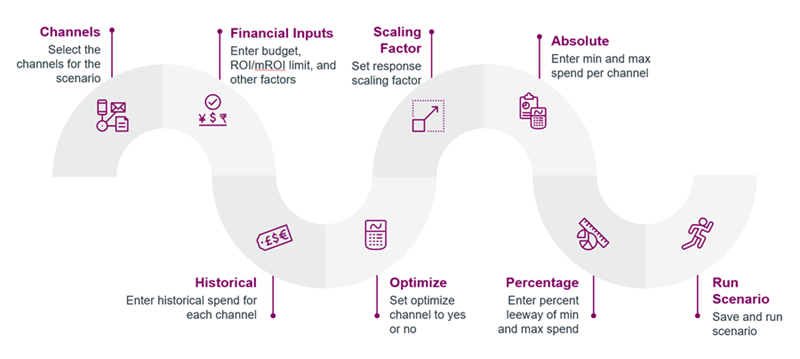











It seems like we have covered the post-pandemic HCP commercial engagement evolution from every possible angle. We know that HCPs have become harder to reach. The majority crave digital rather than traditional face-to-face (F2F) interaction for information on new therapies to help patients. The ‘COVID effect’ has accelerated digital trends (figure 1).
Figure 1. The Commercial Engagement Model Has Changed

The impact on life sciences
What life sciences companies seek now are new tactics and new measurement approaches. The harsh reality is that a lot of marketing spend can be further optimized based on the current reality and many companies are still ‘flying in the dark.’
There is good news! The engagement evolution has been the catalyst for life sciences companies around the globe, including within Canada, to successfully implement new measurement models leveraging Artificial Intelligence (AI). The use of AI allows a granular analysis of channel impact and ROI to reveal the most effective tactics to use for every customer engagement.
These models are called Promotion Attribution (also referred to as Promotion Impact or Promotion Mix Models). These models are helping companies drive between 10-20% in spend reduction or reallocation and a 5-10% increase in net revenue. Companies are finally getting answers to pressing questions.

Why these models are so important
Promotion Attribution Models have a goal to confirm the value that each call, email, video, newsletter, product sample or interaction with physicians (or customers) brings to sales or prescription lift. By understanding the unique contribution of each component in a broader campaign, it is possible to calculate the individual channel return on investment (ROI) or return on efforts (ROE). Sophisticated tools can be further added to these models to recommend optimal spend for marketing and digital activities. A Scenario Building Tool can also be implemented so the marketing team can manually adjust spending or effort on each channel and predict the ROI/ROE impact.
These models and tools can answer questions, such as:
- How much should I invest per channel?
- Would increasing the use of digital sales aids, in conjunction with calls, further increase sales?
- Should I invest further in F2F or redistribute efforts to new targets?
- Should I intensify efforts on meetings to increase sales?
- Would an e-mail campaign be advantageous?
- Should efforts on “medium” specialists be redirected to “high” specialists?
Figure 2 Scenario Planning Tool

As an added benefit, these models are helping companies assess their current sales force size, confirming if reach and frequency goals are realistic, by uncovering:
- Under/over exposed physician segments
- Under/over utilized channels
- Unusual or unexpected high numbers of interactions on specific groups of physicians
- Market trends or unexpected events derailing historic patterns or trends (e.g., COVID-19)
- How well specific channels cover for another (e.g., heightened use of digital channels vs F2F)
In industry use case examples, we see companies reducing the use of high-cost channels on low-potential customers. A global company was able to increase ROI by six points by reducing the number of calls to mid-low general practitioners, increasing the number of calls to high-tier specialists, and covering the gap with emails. Another company removed F2F calls to low-potential customers which led to the reallocation of 30% of sales effort to General Practitioners. In an extreme case, we even saw a brand launch without sales reps.
Figure 3 (illustrative): Brand A has the highest detailing spend on GPs when charting by level of spend. In the ROI chart, Brand B has the lowest ROI among the GPs.

Key must haves to achieve optimal ROI
Accuracy and depth of information
Data. Data. Data. To achieve the highest precision, you must get all the promotional and transactional data (touchpoints) and granular Rx level data at individual level (outcome). Lack of data or granularity can make your predictions more a guess than a prediction.
Life Sciences specific industry expertise
Advanced analytics and data science skills are not enough. You also need an industry expert. An incorrect assumption or wrong interpretation can result in your company not reaching the right individuals with the right channel, wasting more money.
For example, your budget-allocation scenario for specialty HCPs may suggest a higher spend on emails, newsletters, and digital content. However, an industry expert would know that over exposing specialty doctors to digital channels can negatively affect overall customer engagement. Having the correct assumptions and the correct interpretations of the outputs is key to achieving optimal ROI.
Know what is working and adapt continuously
Modern techniques using AI can process large data volumes and generate insights in minutes. Therefore, make sure you implement technology to ensure your stakeholders receive feedback in minutes; to know what’s working and what needs to be adjusted further. Company and market variables are fluid. To achieve optimal ROI, you need to be able to adjust on the fly.
Let IQVIA’s expertise help your company measure and optimize engagement performance. We can provide a clear vision in redesigning commercial models and in the meaningful use of granular data.
Read more on Artificial Intelligence on our webpage.
Have questions? Contact us at CanadaInfo@iqvia.com.
Reference
- Figure 1: Channel Preference Versus Promotional Reality (White Paper), IQVIA
- Figure 1: SermoCOVID-19 HCP Sentiment Series, Part 5: Current & Future Remote Engagement with Pharma Sales Representatives, Published December 2020
- Measurement and optimization of post-COVID engagement performance, IQVIA Sept 2020
- Market Mix Modeling (MMM) - https://towardsdatascience.com/market-mix-modeling-mmm-101-3d094df976f9

